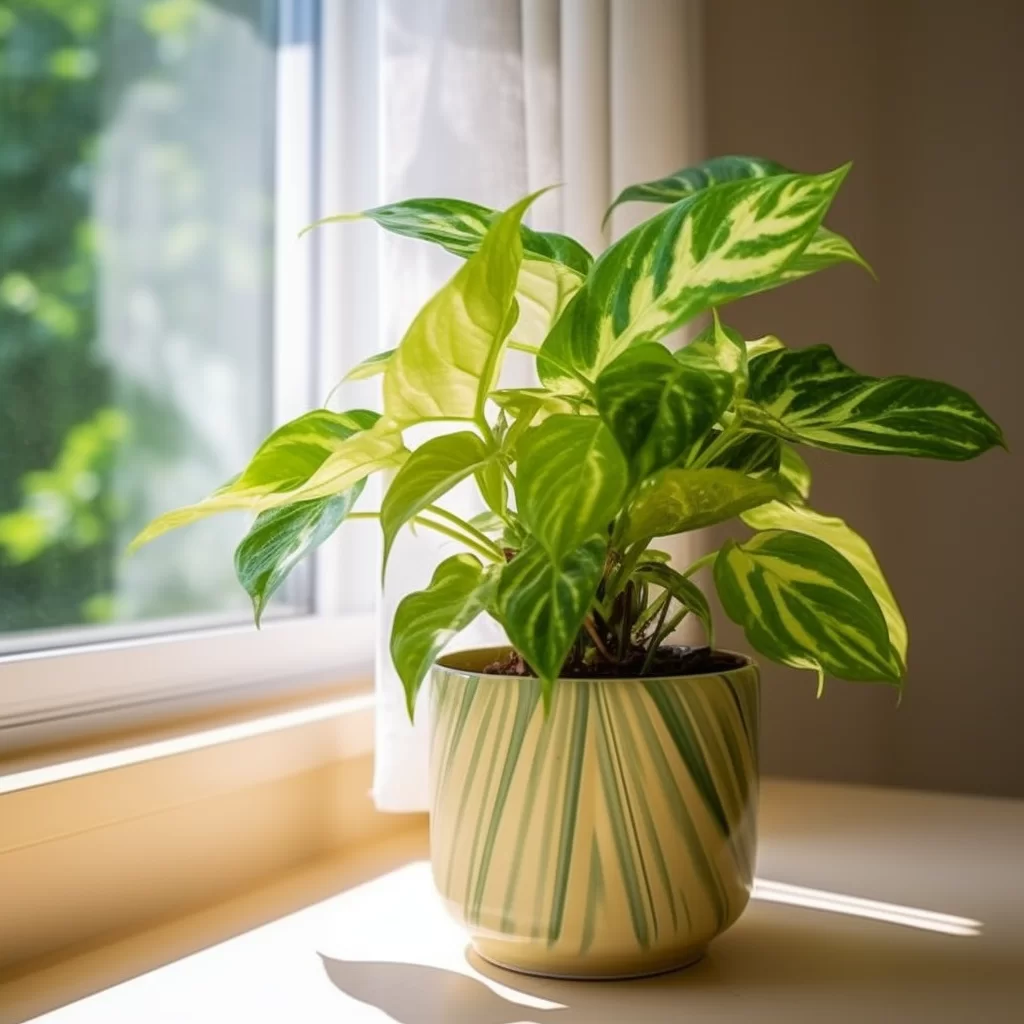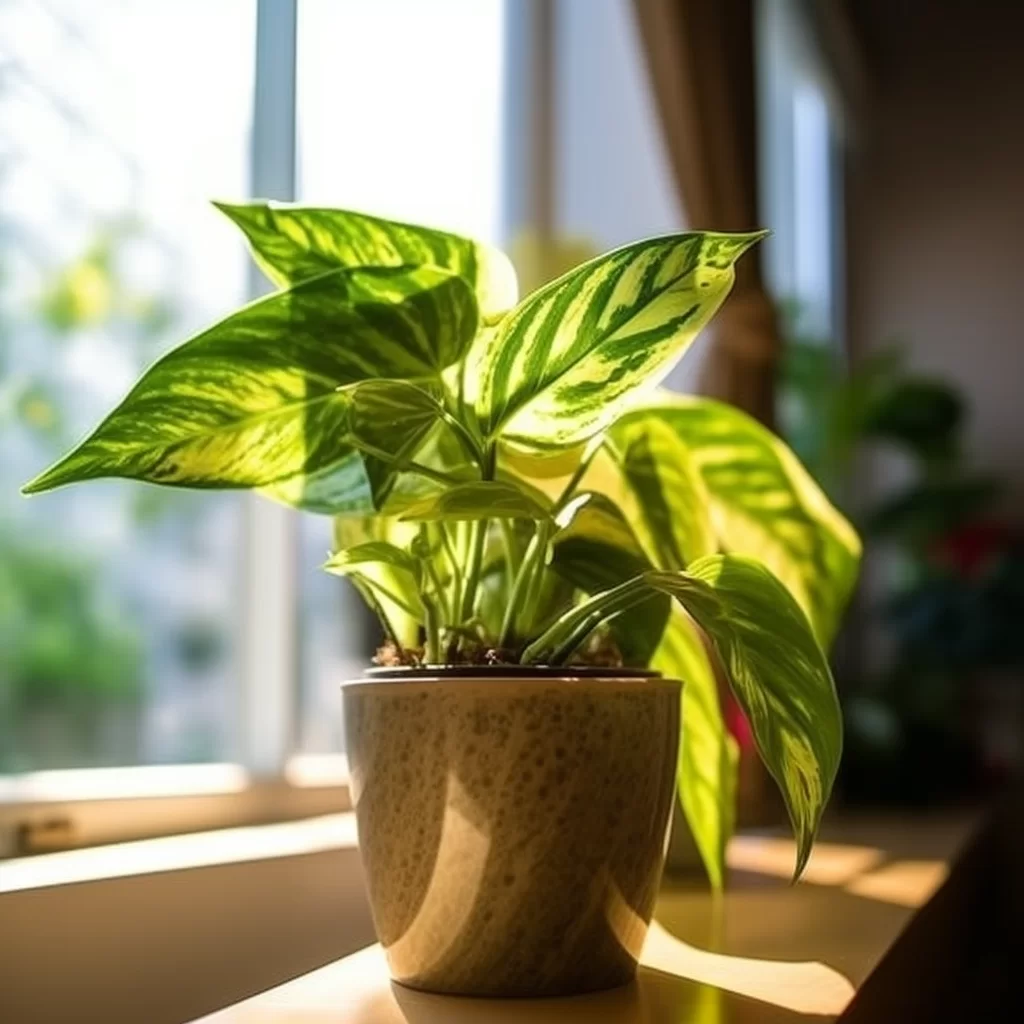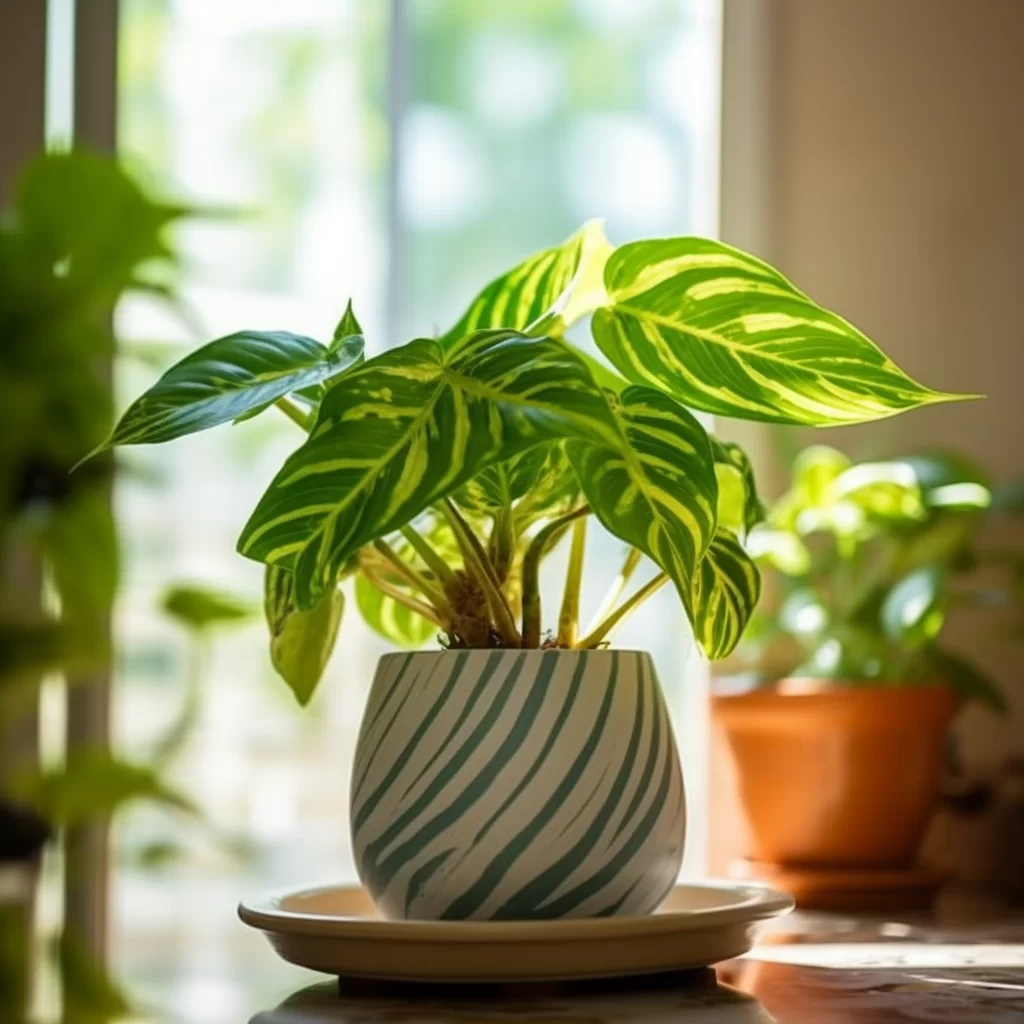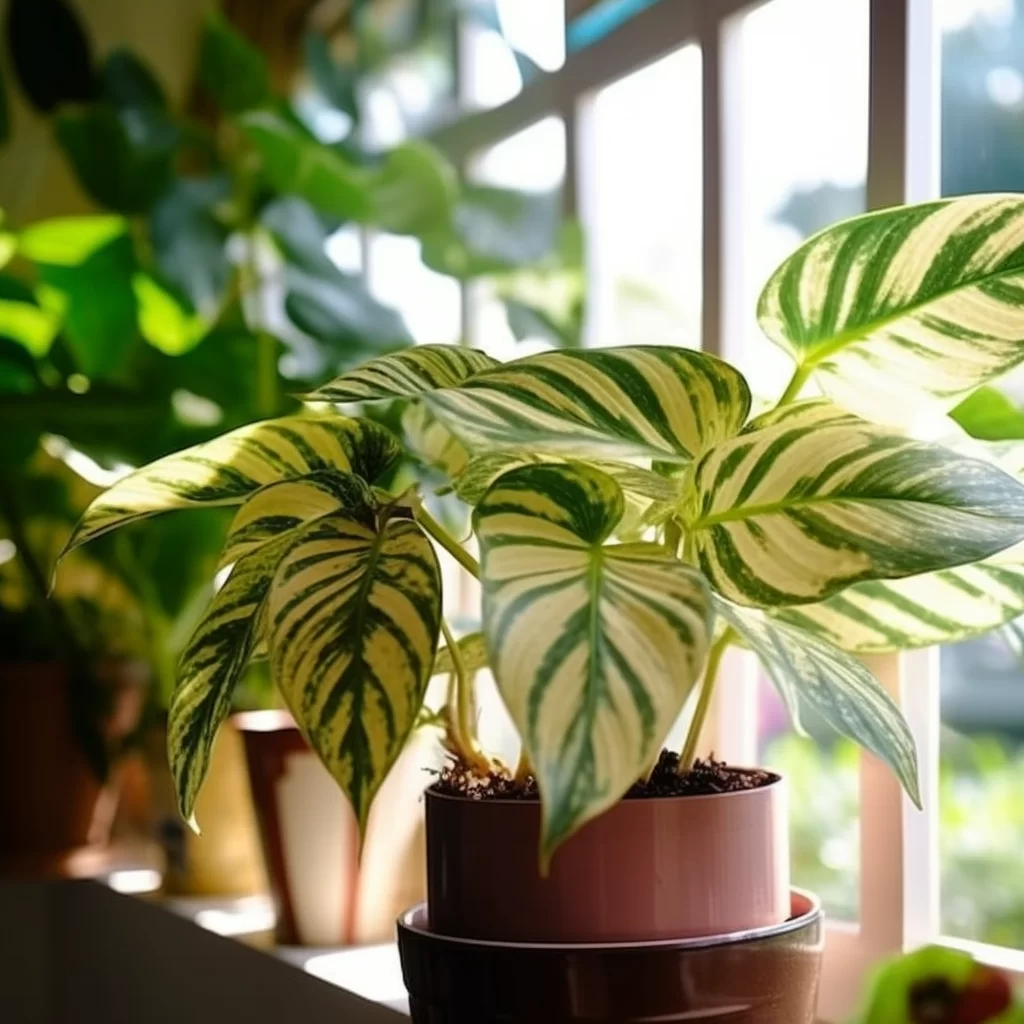Story of Day :
Contents
The Ultimate Guide to Syngonium Plant: Care Tips and More
If you’re on the hunt for a houseplant that requires minimal attention yet provides a burst of freshness to your living space, look no further than the syngonium plant.
Not only is it easy to maintain, but its stunning appearance also makes it an ideal choice for enhancing any room’s aesthetic.
Available in various colors and patterns, this resilient plant can adapt well even in low-light environments, making it an excellent indoor option.The syngonium plant is an all-around winner when it comes to choosing a houseplant that ticks all the right boxes.
Its versatility and beauty make it suitable for decorating any décor style while requiring minimal effort to keep healthy.
Whether you’re busy with work or prefer spending time outdoors instead of tending plants, the syngonium will still thrive without much intervention on your part.
So if you want to add some greenery into your life without adding extra chores onto your plate, consider getting yourself one of these lovely plants!
What is a Syngonium Plant?
Syngonium plants are a type of houseplant that boasts stunning heart-shaped leaves in vibrant colors including green, pink and white.
They can also have a mesmerizing variegated pattern.
This plant is part of the Araceae family and originates from tropical areas within Mexico, South America, and Central America.
It’s long stems make it an elegant addition to any indoor space that enjoys plenty of natural light. Arrowhead plants or goosefoot plants are other common names for Syngonium plants thanks to their unique arrow-like shape with downward-pointing tips on each leaflet.
Arrowhead plants or goosefoot plants are other common names for Syngonium plants thanks to their unique arrow-like shape with downward-pointing tips on each leaflet.
As well as being easy on the eyes, these plants require minimal care and thrive well indoors making them popular among novice gardeners looking for low maintenance foliage additions to their homes.
With such a wide variety of colors available to choose from there is sure to be a Syngonium plant that will match any decorative style or preference!
Types of Syngonium Plants
- Syngonium podophylum: The most common species with arrow-shaped leaves
- Syngonium chiapense: Also known as the Mexican evergreen
- Syngonium wendlandii: Has large velvet-like foliage with silver veins
- Sygnomium erythrophyllum: Features reddish-purple leaves with pink veins
Taking care of your Syngonium plant is essential if you want it to thrive and brighten up your living space.
This tropical houseplant, also known as the arrowhead plant, requires moderate temperatures and indirect sunlight for optimal growth.
It’s important to water it regularly but not over-water as this can cause root rot leading to its demise.
Ensure that the soil is moist but not waterlogged before watering it again.In addition, Syngonium plants enjoy being fertilized every other month during their active growing season from spring through summer.
You can use any general-purpose fertilizer or a specifically designed one for houseplants mixed with water according to the package instructions.
Another thing to keep in mind is that these plants love humidity which mimics their natural habitat; hence regular misting or placing them on a pebble tray filled with water will help keep them happy and healthy!
Light Requirements:
The sygnomium plant is a species that thrives in areas with a lot of shade.
As such, it prefers indirect light and can be damaged by direct sunlight.
Excessive exposure to the sun can cause discoloration on the surface of its leaves, which not only detracts from its beauty but can also harm its ability to photosynthesize properly.
Therefore, gardeners are better off placing these plants near north-facing windows where only filtered light enters.If you are looking to cultivate beautiful sygnomiums in your home or garden, it’s important to ensure that they receive the right amount and quality of light.
Because these plants grow naturally under shady conditions, they tend to prefer indirect light and can suffer if exposed directly to sunlight for too long.
In fact, overexposure to direct sun rays can cause damage on their leaves by causing unsightly discoloration.
To keep your sygnomiums healthy and thriving, consider placing them near north-facing windows where filtered light enters- this will create an optimal environment for them grow in!
When it comes to growing healthy plants, soil is an essential factor that cannot be overlooked.
Soil requirements refer to the characteristics of soil that are necessary for plants to thrive.
The ideal soil composition includes a balanced combination of sand, silt, and clay particles.
This ensures adequate drainage and water retention while preventing excessive waterlogging or drying out of the soil. Aside from physical properties, soil should be rich in nutrients such as nitrogen, phosphorus, and potassium.
Aside from physical properties, soil should be rich in nutrients such as nitrogen, phosphorus, and potassium.
These nutrients are vital for supporting plant growth and development.
Additionally, the pH level of the soil should be within a specific range depending on the type of plant being grown.
Some plants prefer acidic soils while others thrive in alkaline environments.Overall, understanding the requirements of your particular plants is crucial to ensure their success in your garden or farm.
It may require regular testing and amending of your soils to provide optimal growing conditions for your crops or flowers but ultimately will result in happier healthier vegetation!
The soil should be well-draining and loose.
It should contain organic matter such as peat moss, perlite or vermiculite.
A mixture of potting soil and sand can be used as a suitable growing medium for the Syngonium plant.
Watering is a crucial element of plant care that involves providing plants with the right amount of water to support their growth and development.
Depending on the type of plant, watering frequency and amount may vary.
Overwatering or underwatering can lead to adverse effects such as root rot, wilting, or stunted growth.
It is important to pay attention to the soil moisture level and adjust watering accordingly.
Generally, it is recommended to water plants when the top inch of soil feels dry to touch.
Water should be applied slowly and evenly around the base of the plant rather than over its foliage. In addition to regular watering, certain plants may require special care such as misting or specialized irrigation systems.
In addition to regular watering, certain plants may require special care such as misting or specialized irrigation systems.
For instance, tropical plants like ferns thrive in high humidity environments and benefit from occasional misting with room temperature water.
Succulent plants on the other hand store water in their leaves so they require infrequent but thorough watering sessions with well-draining soil mixtures.
Overall, mastering proper watering techniques can help ensure healthy vibrant plants that add beauty and life inside our homes or gardens while also promoting environmental sustainability by reducing wastage of this precious resource – water!
Syngonium plants are relatively easy to care for, but it is crucial to maintain consistent moisture levels.
While it may be tempting to water the plant frequently, overwatering can be detrimental.
The soil should be kept moist but not soaking wet, as this may cause yellowing of leaves and other signs of distress.
To avoid this issue, wait until the top inch of soil feels dry before watering again.
Additionally, Syngonium plants thrive in high humidity environments due to the waxy coating on their leaves.
This means that misting every 2-3 days or investing in a humidifier is essential for ensuring healthy growth and development.Overall, caring for Syngonium plants requires attention to detail and consistency in watering practices and humidity levels.
By keeping these factors in mind and adjusting care as needed based on the plant’s response, anyone can successfully cultivate a beautiful and thriving Syngonium plant.
Fertilizer is a substance that is added to soil or plants to help them grow and thrive.
It contains essential nutrients such as nitrogen, phosphorus, and potassium that are necessary for plant growth.
Fertilizers can be organic or synthetic and come in different forms including granules, liquid, or powder.Using fertilizers correctly can significantly improve crop yields and overall plant health.
However, excessive use of fertilizer can lead to negative environmental impacts such as water pollution and the depletion of valuable resources.
Therefore, it’s important for farmers and gardeners to use fertilizers responsibly by following recommended application rates and timing.
With proper use of fertilizers, we can ensure sustainable agriculture practices while also meeting the growing demand for food production worldwide.
If you want your sygnomium to grow strong and healthy, it is important to give it the proper nutrients.
One way to achieve this is by fertilizing it regularly during its growing season with a balanced liquid fertilizer that has been diluted with water according to the instructions on the package.
This will help provide your plant with all of the necessary nutrients it needs so that it can thrive and produce lush foliage.
Another option is to use slow-releasing fertilizer pellets that can be added directly into the soil every few months, allowing for a gradual release of nutrients over time.By following these simple steps, you can ensure that your sygnomium remains healthy and vibrant throughout its life cycle.
Whether you choose to use liquid fertilizer or slow-release pellets, providing your plant with regular doses of these essential nutrients will help promote growth and encourage optimal foliage development.
With a little bit of care and attention, your sygnomium will be sure to reward you with beautiful leaves for years to come!
Troubleshooting Common Problems with Sygnomium Plant
- Yellowing Leaves: If your Syngonium plant’s leaves start turning yellow, it could be due to too much direct light or overwatering; reduce watering frequency and move the plant out of direct light.
- Browning Leaves: If your Syngonium Plant has brown leaf tips, this could indicate underwatering; increase watering frequency or try keeping a bowl filled with water close by where evaporated water from bowl should raise humidity levels around plant
- Insects: Your sygnomium may attract insects like spider mites which can cause webbing and discolouration on leaf surfaces.
Regular spraying of neem oil solution or insecticidal soap will help to control this infestation.
Conclusion
Syngonium plants are an ideal houseplant for anyone who wants to add some greenery to their home without too much hassle.
Their wide range of colors and patterns make them a perfect fit for any interior décor.
With proper care, you can keep your Syngonium plant healthy and happy for many years.To ensure the well-being of your Syngonium plant, it is essential to follow some simple care tips.
These may include providing adequate light and water, regularly pruning the stems and leaves, controlling pests that may attack the plant, and re-potting it when necessary.
By following these steps consistently over time, you will be rewarded with a beautiful indoor garden that enhances the ambiance of your living space.